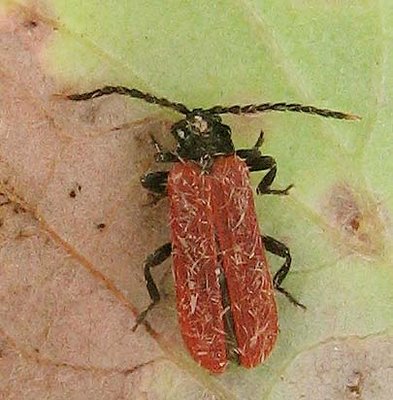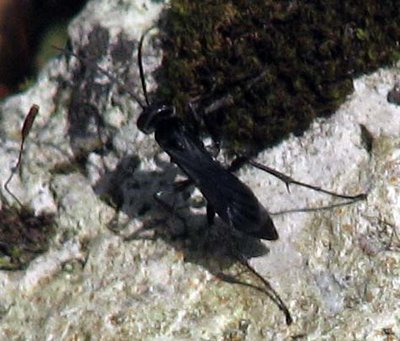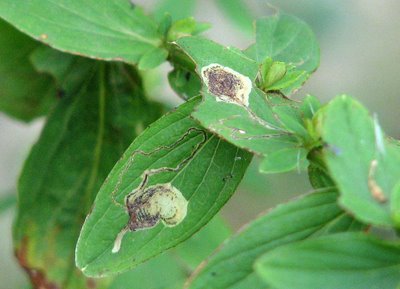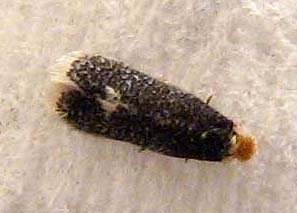

Today I found a glow-worm larva (top picture) under Gingerbread Refuge in Emthree. It was not fully grown, but nearly so and probably in its second autumn. It will remain much the same size until next spring when it will feed up quite rapidly on snails.
Four days ago in Friston Forest our group of recorders found several larvae of the sawfly Tenthredo thompsoni (lower picture) with a pattern curiously similar to that of the young glow-worm. There are several other not very closely related sawflies that have a similar pattern of two lines of orange spots on a dark ground.
I wonder what this signifies. It is not, to my eyes, a characteristic warning pattern saying "don't eat me", nor does it seem to be a camouflage that causes the creature to merge into its background (unless the spots are supposed to look like glints of sunshine on a dark ground).
Suggestions will be welcome.
The identity of this sawfly larva, inter alia, is the subject of much dispute among members of the sawfly discussion group. In may be a small Abia sericea, or a Tenthredo johnsoni. Anyone who thinks they know is welcome to comment.






